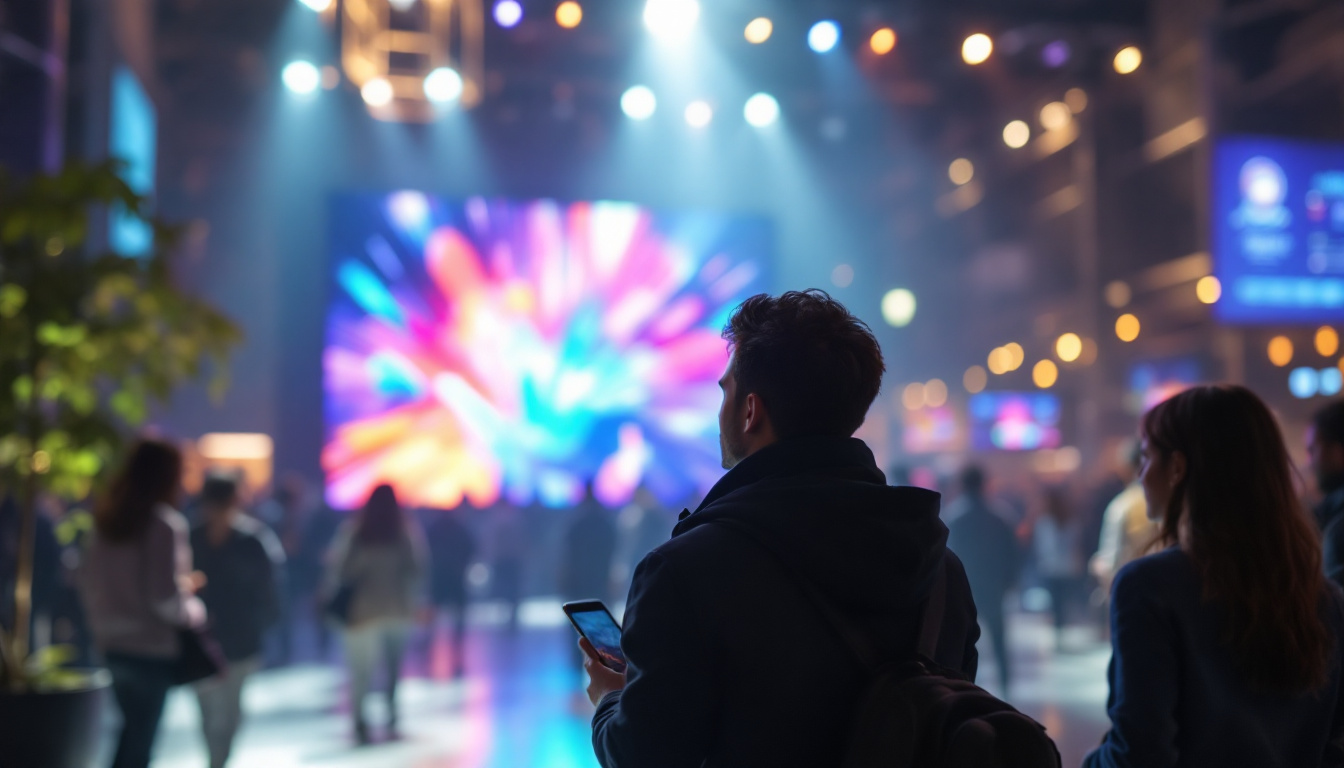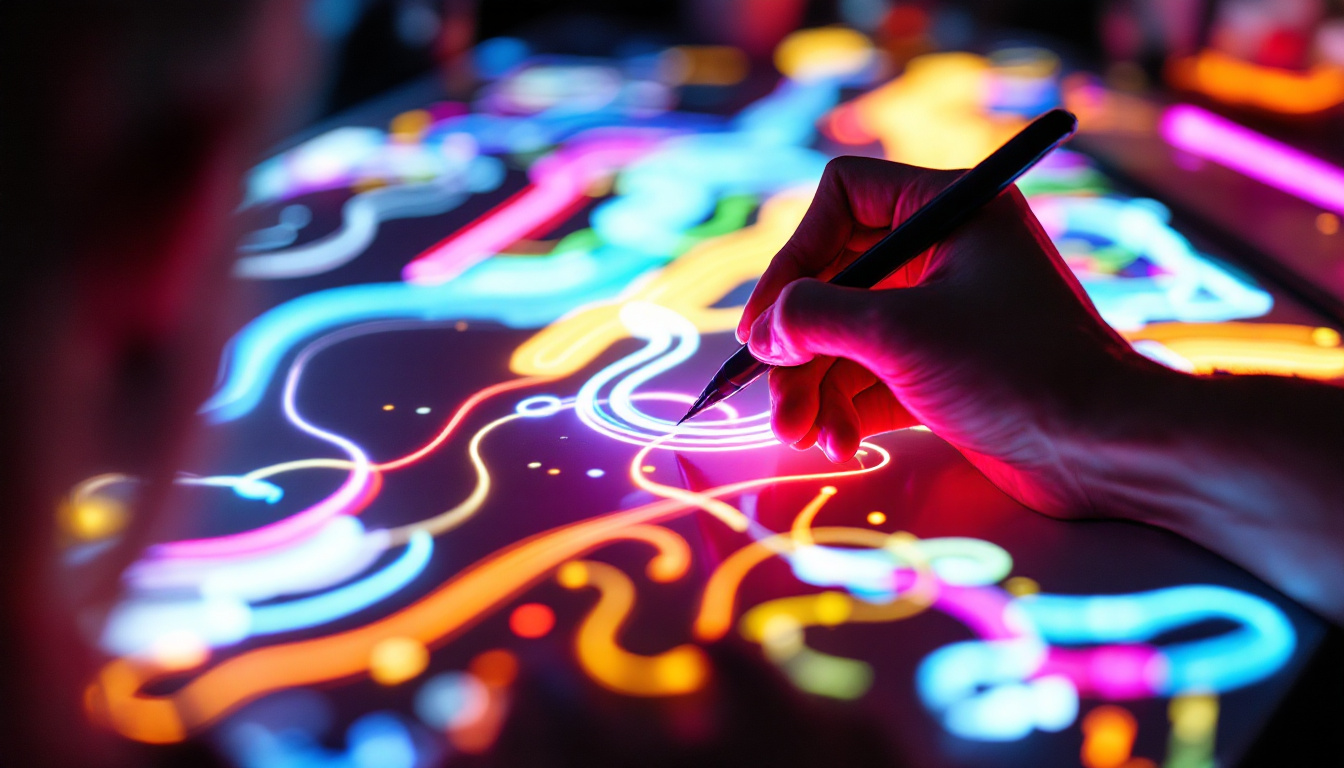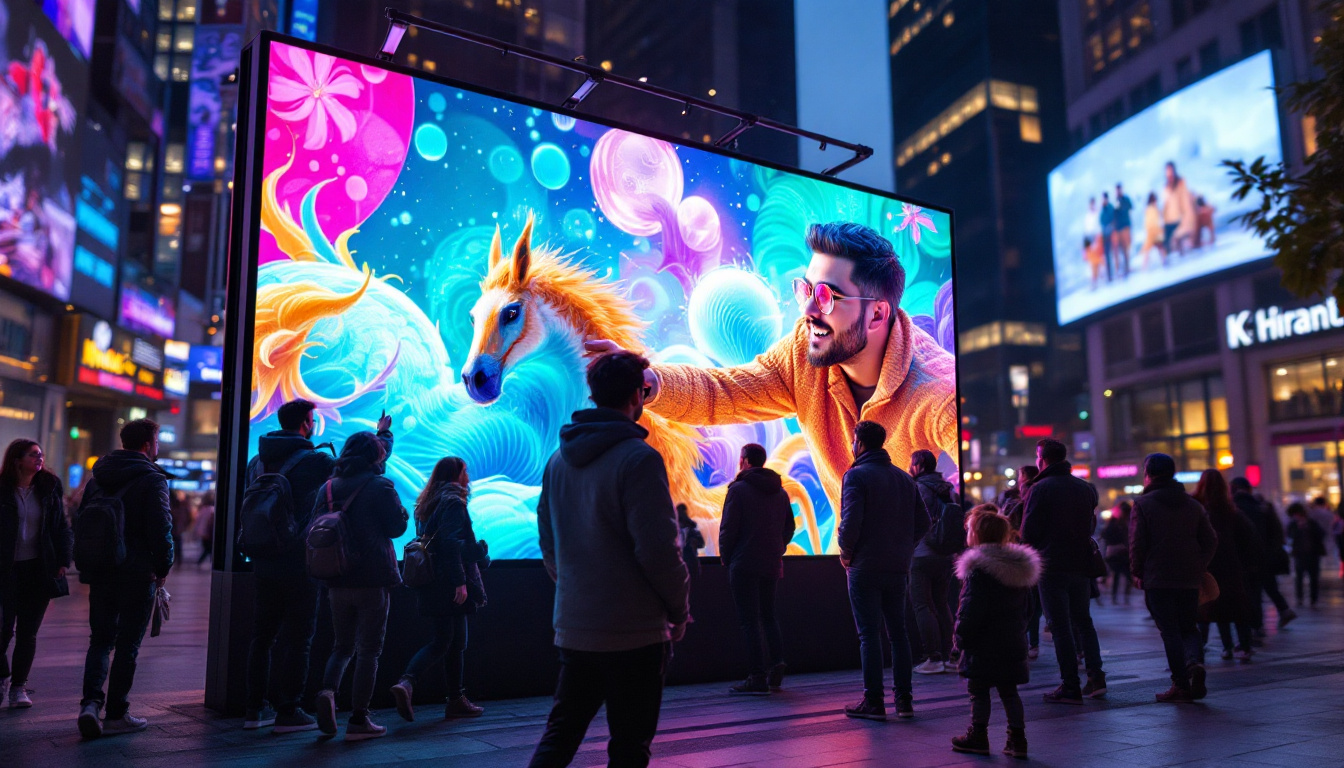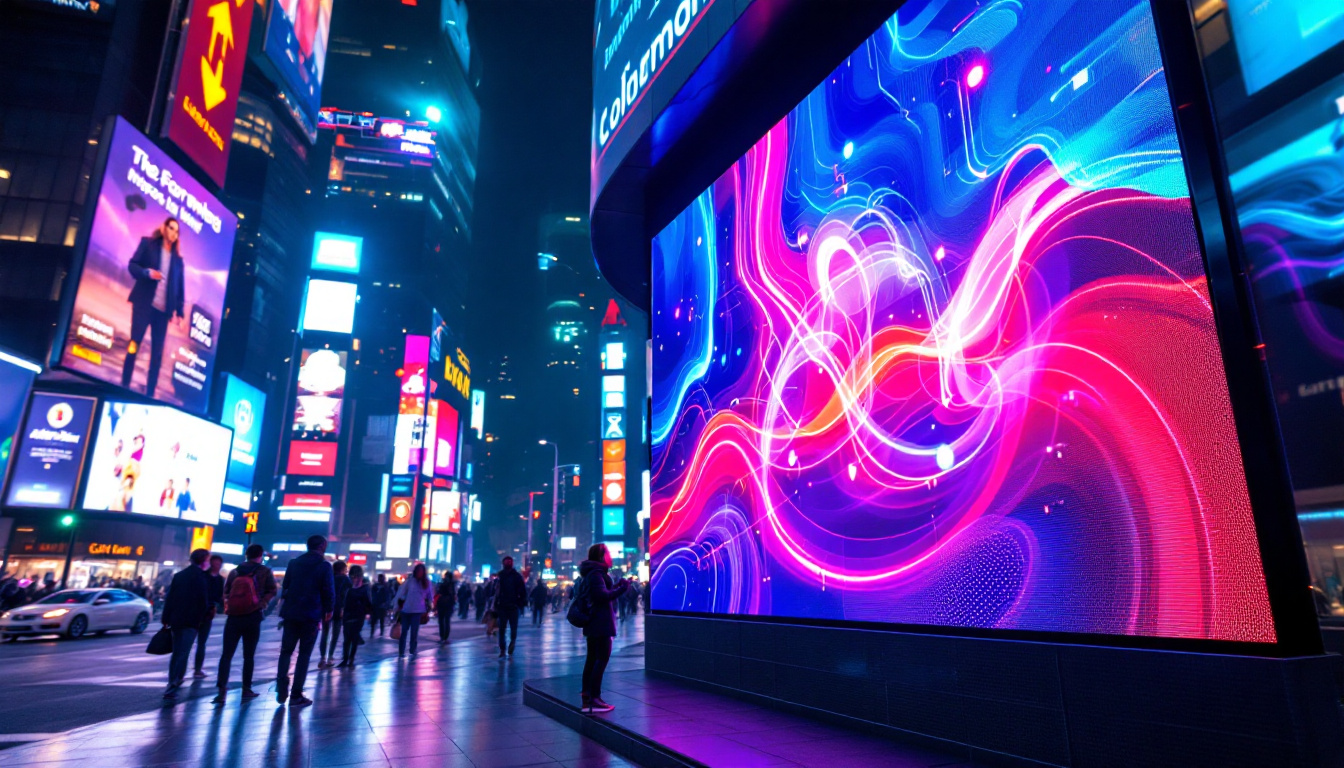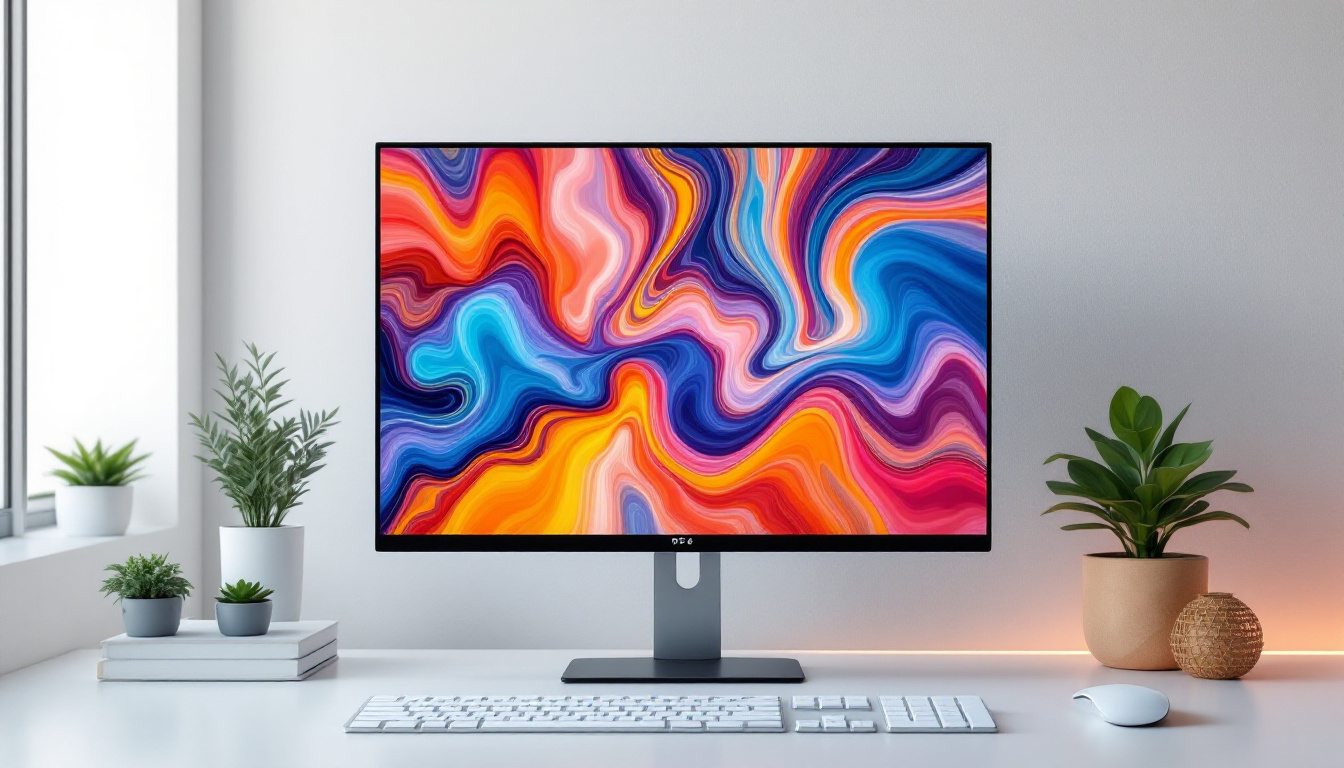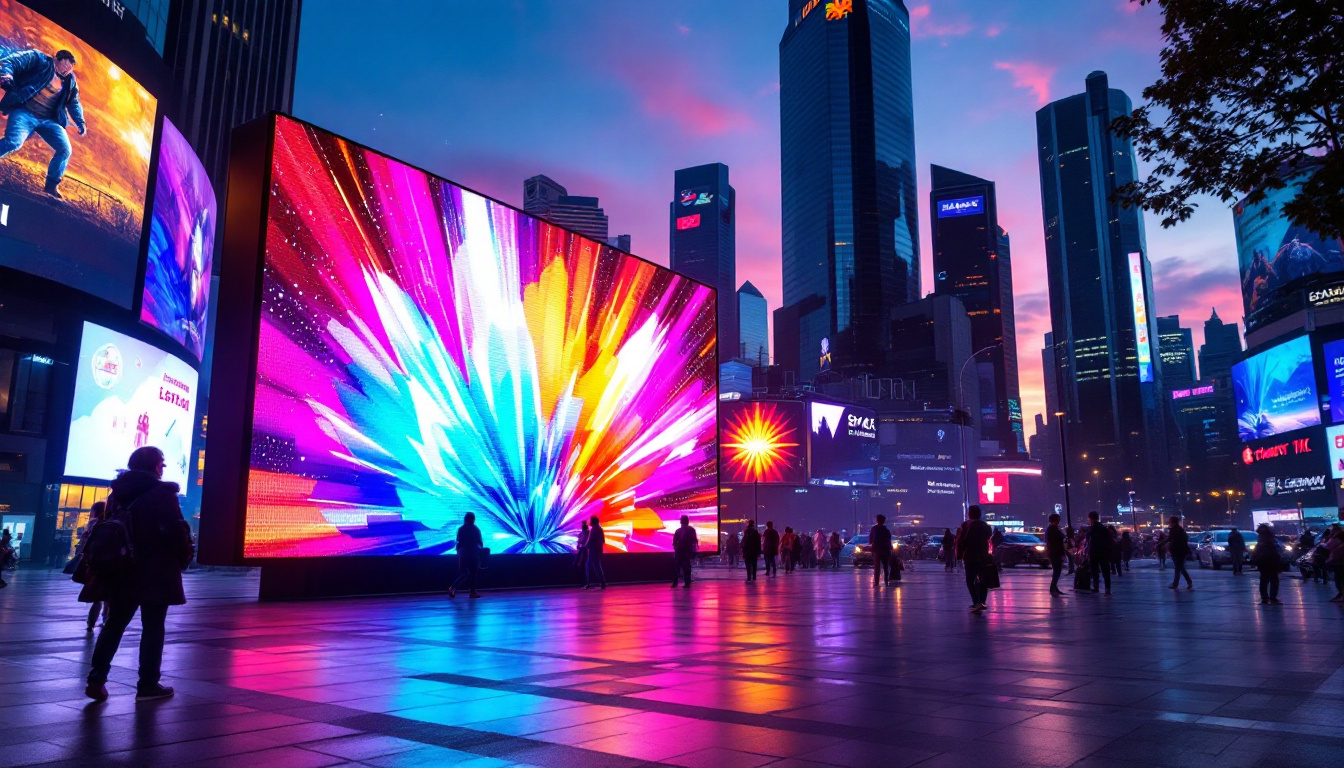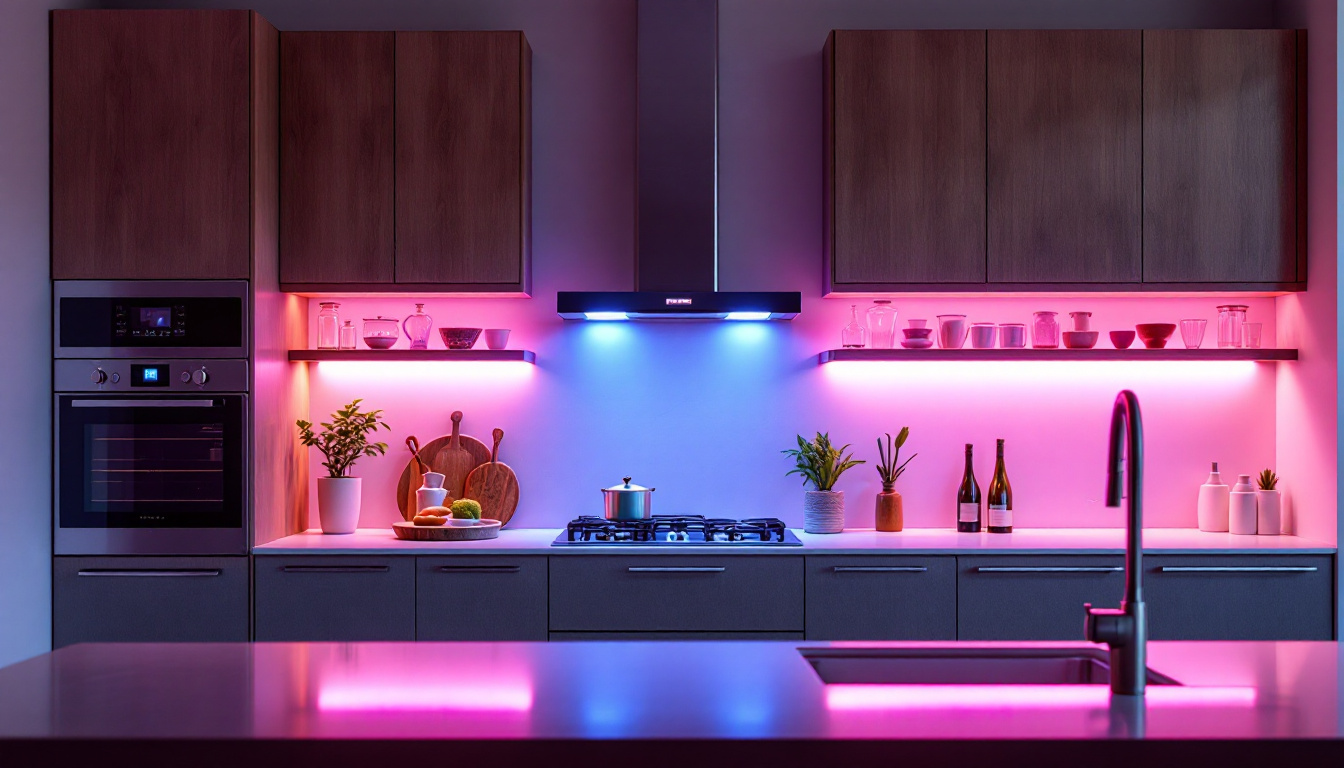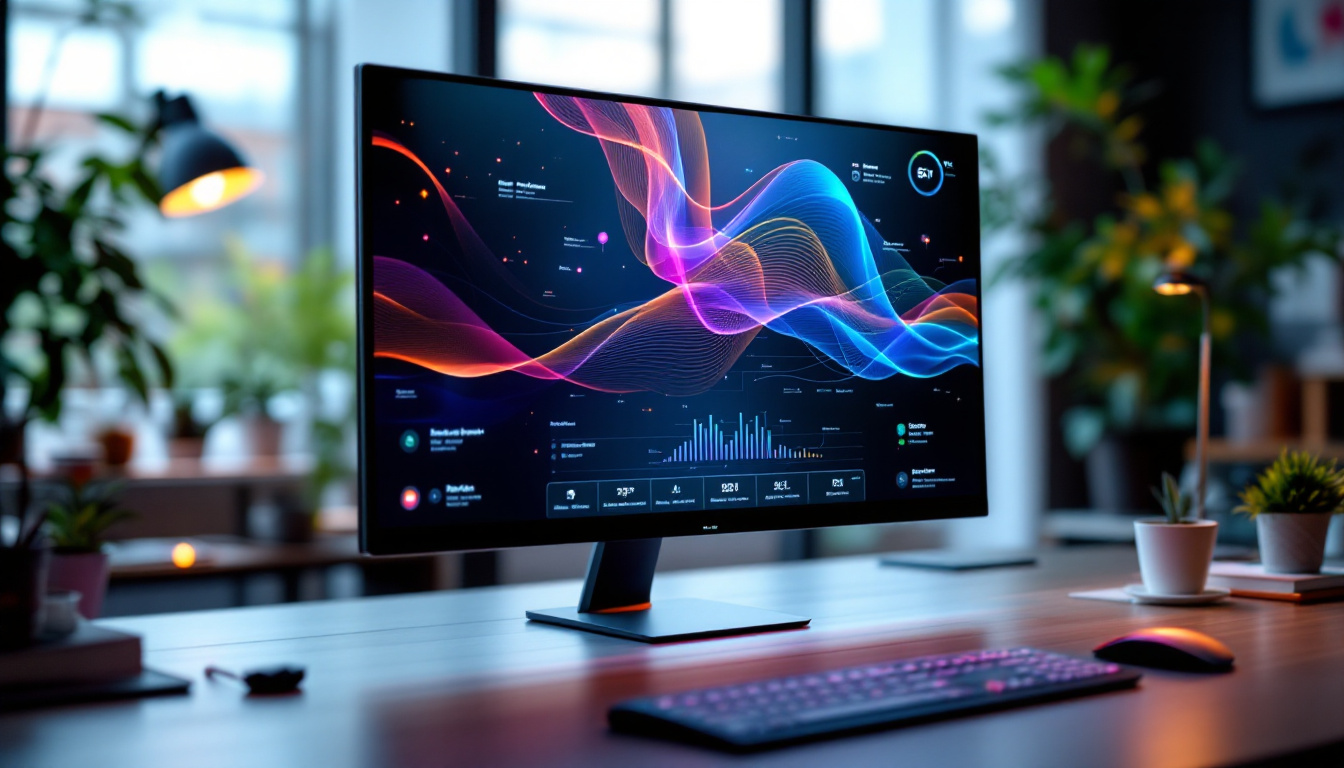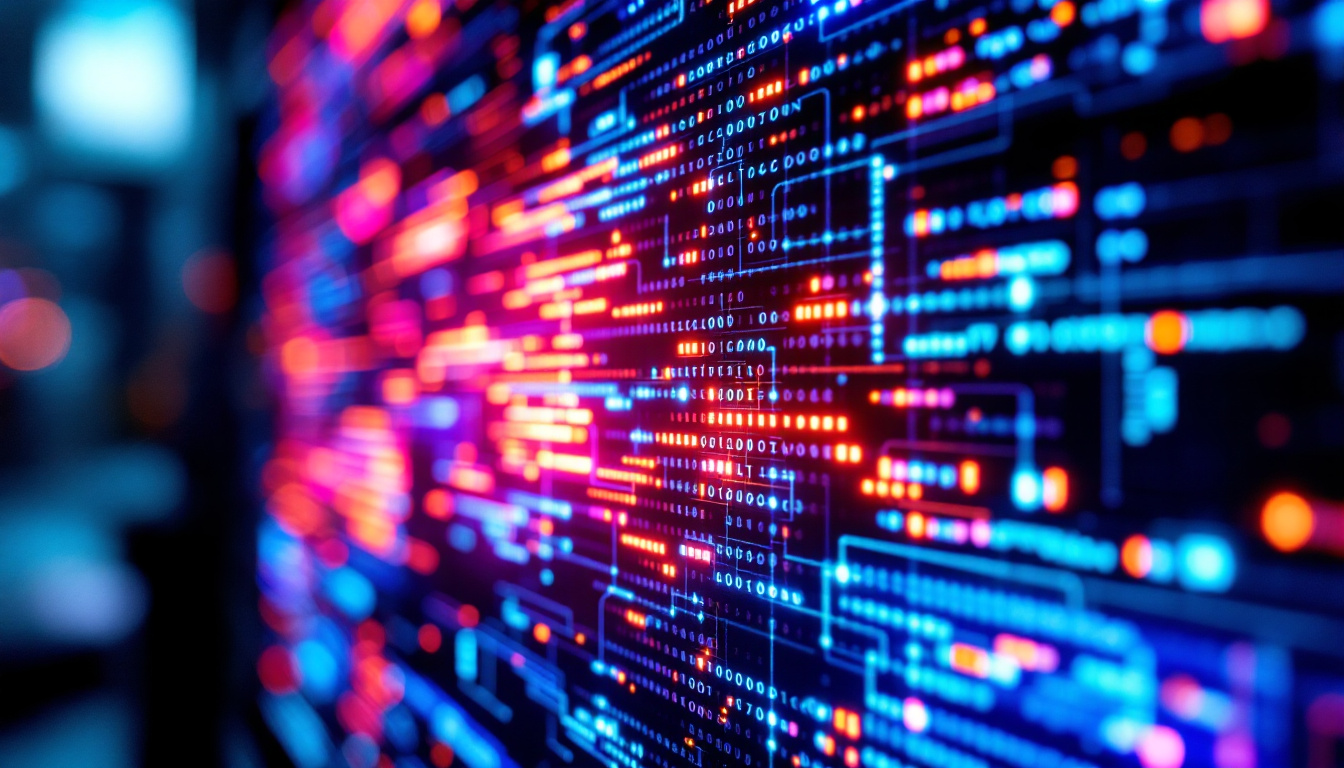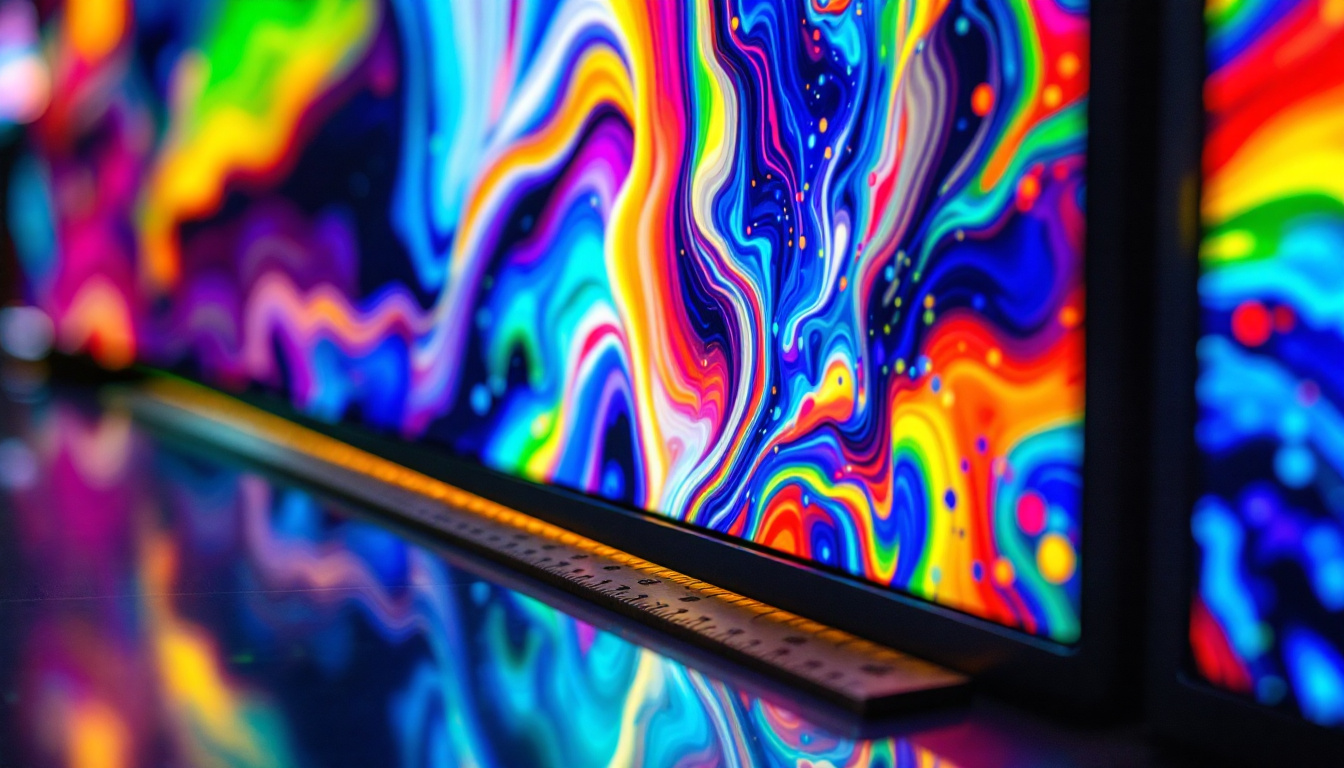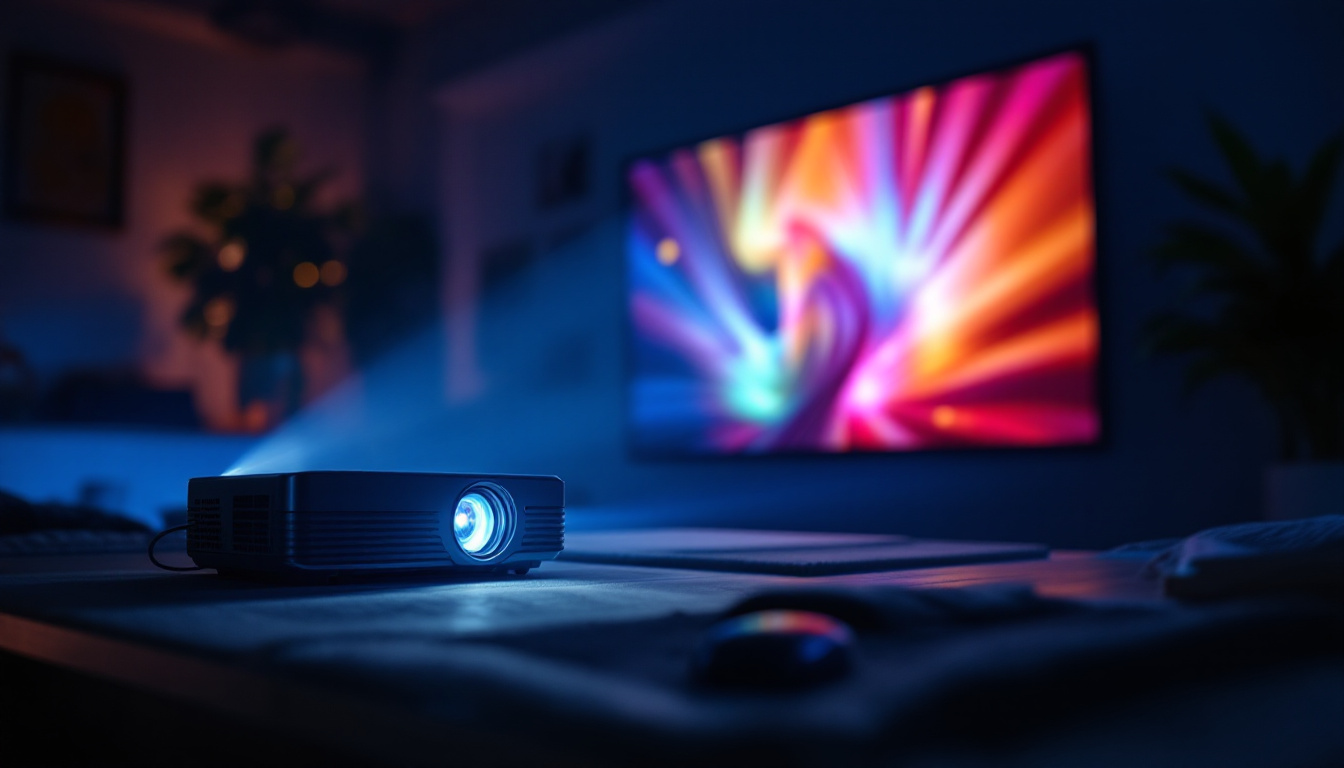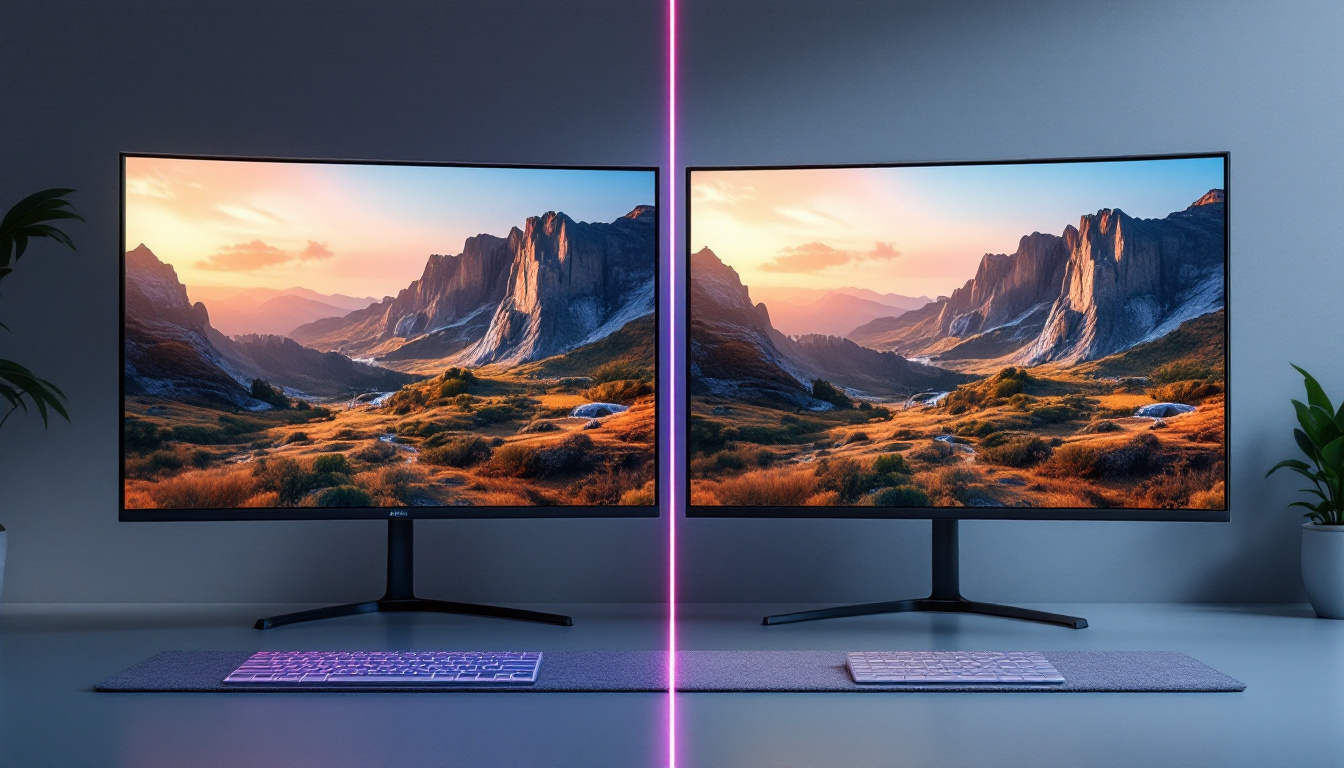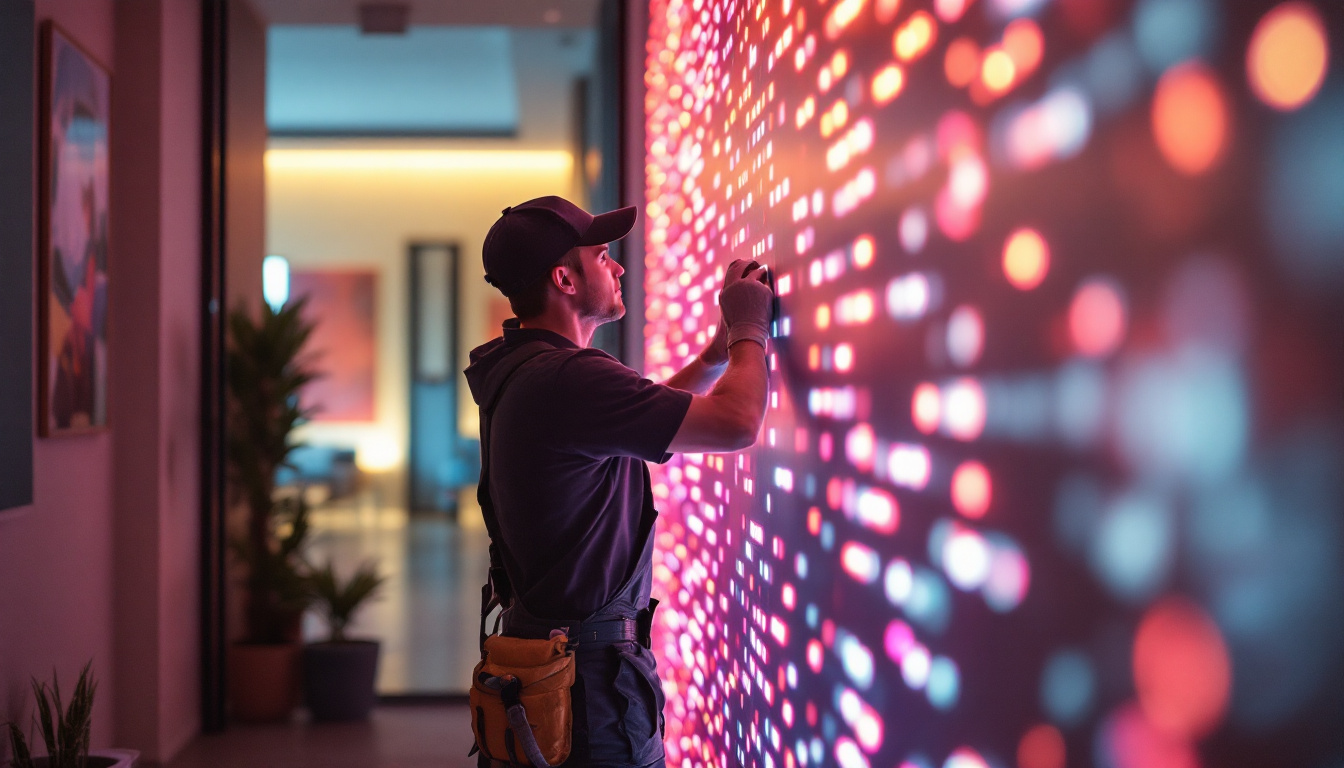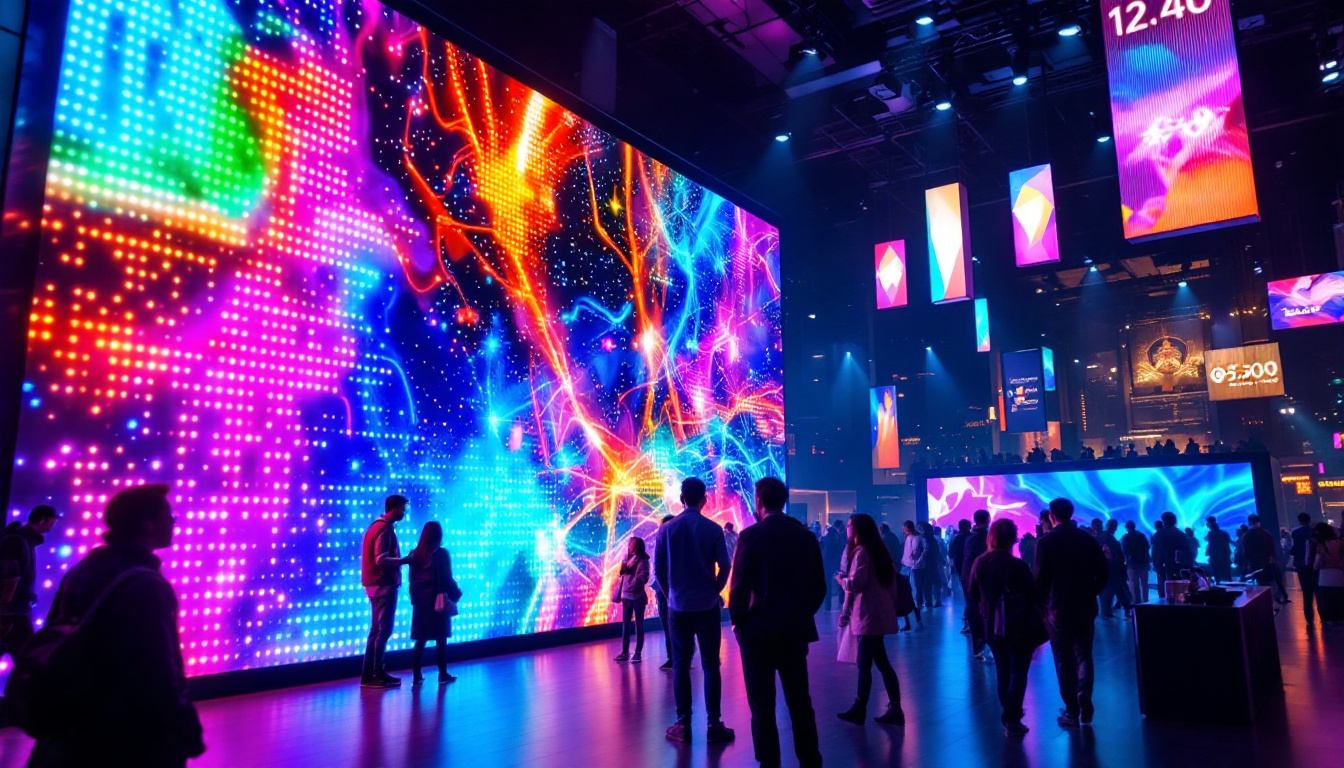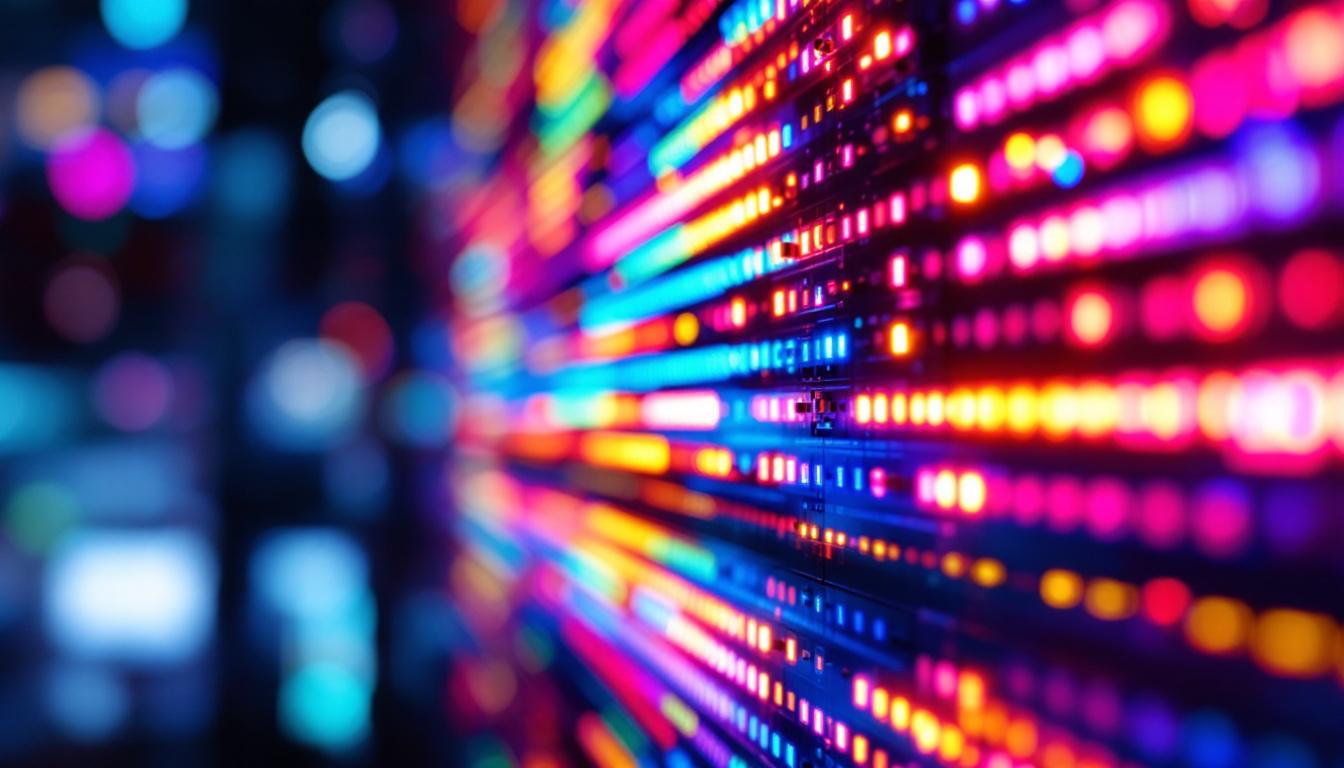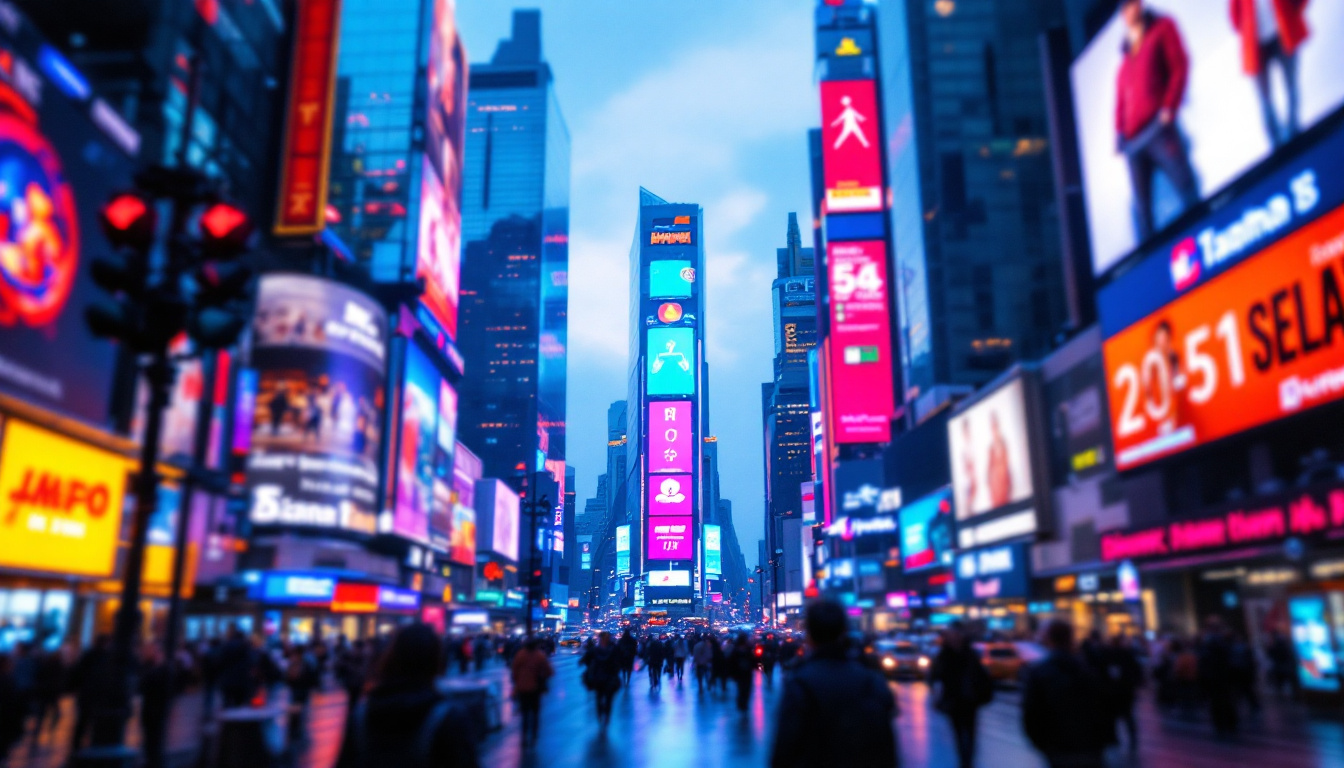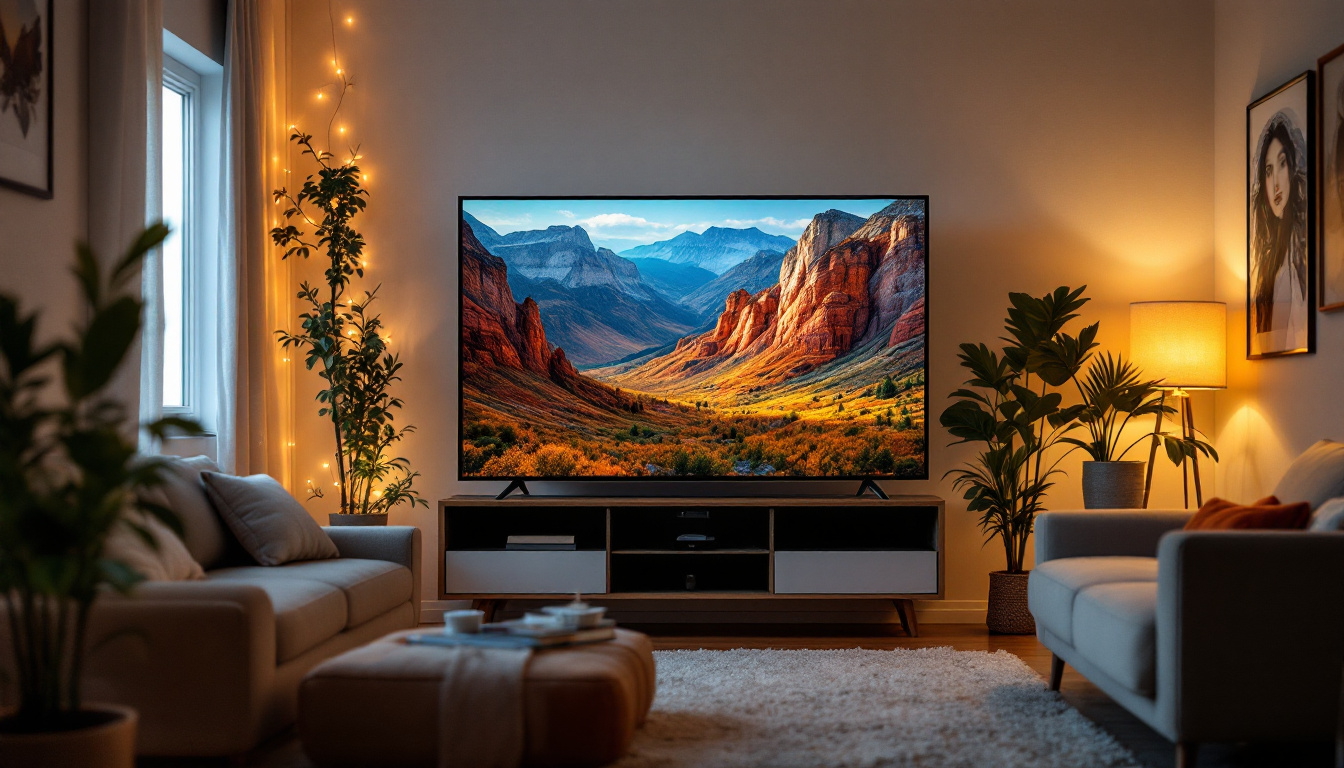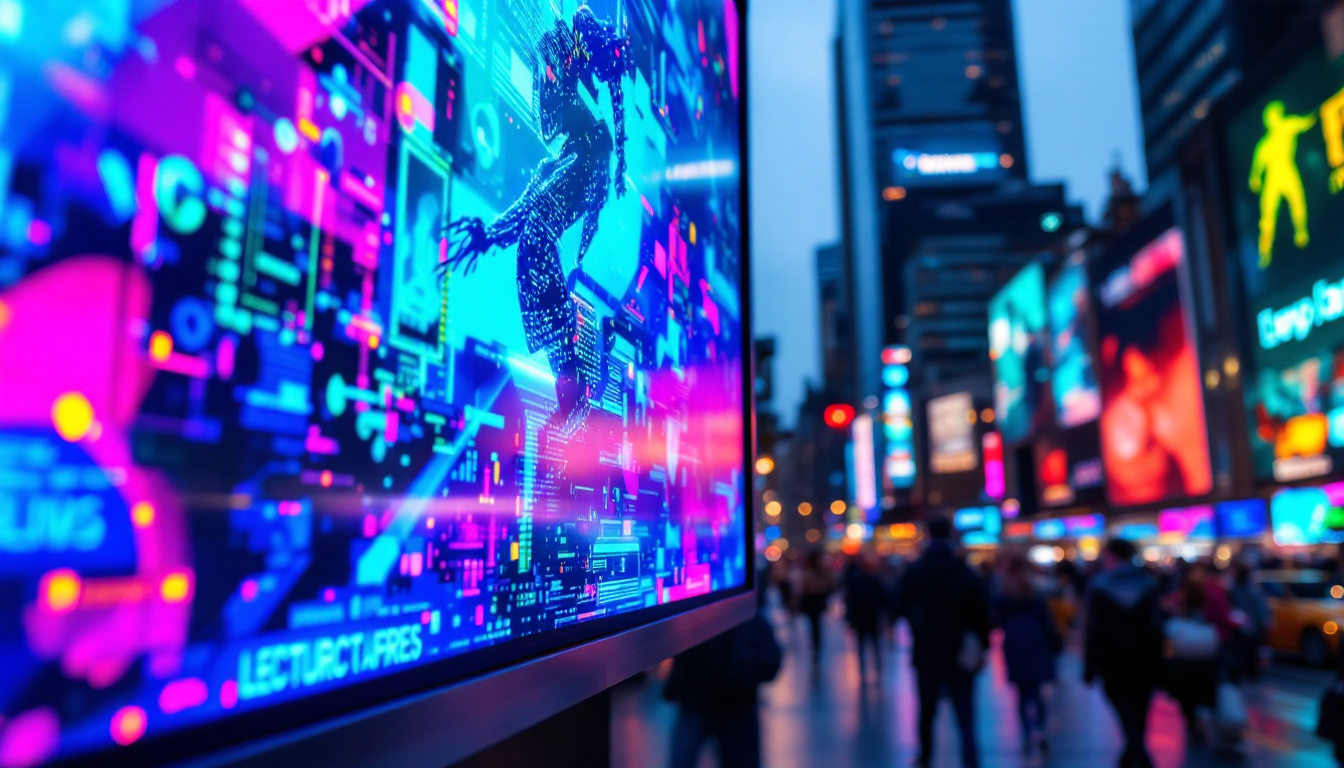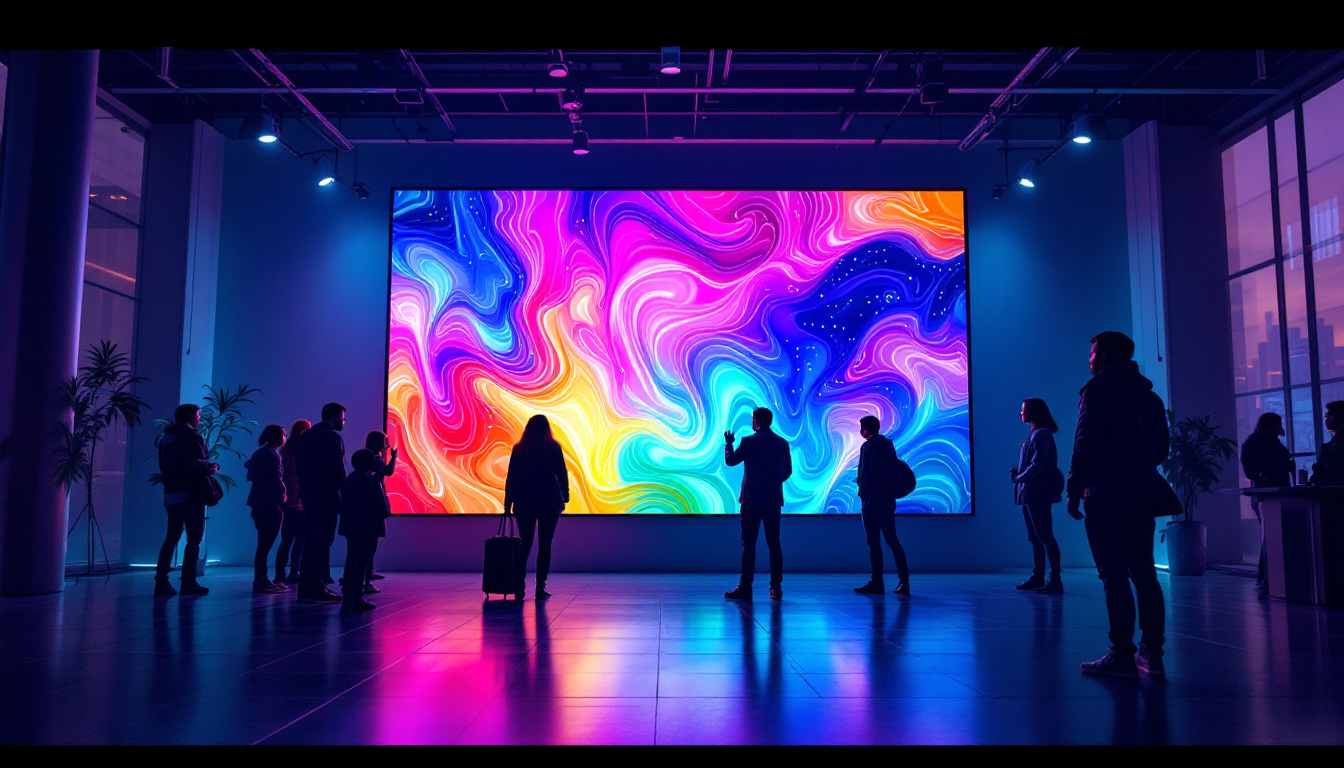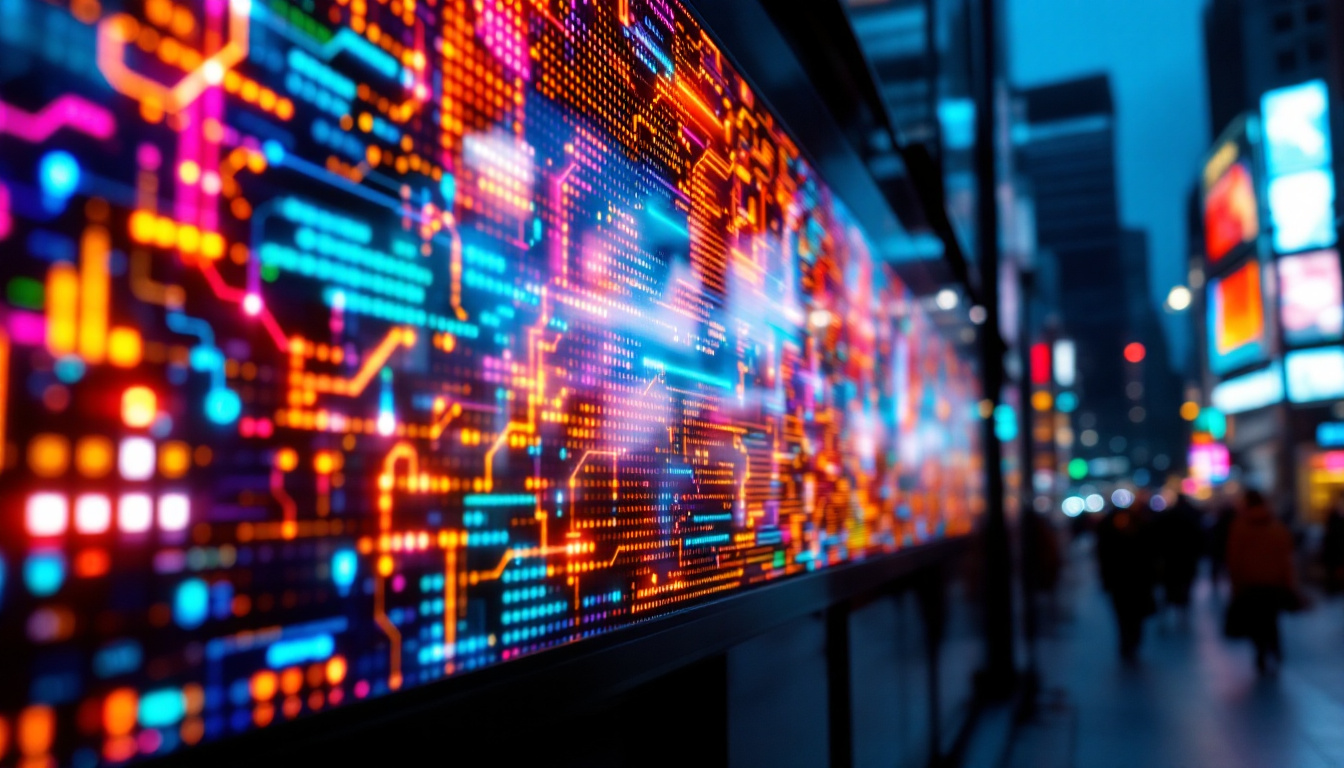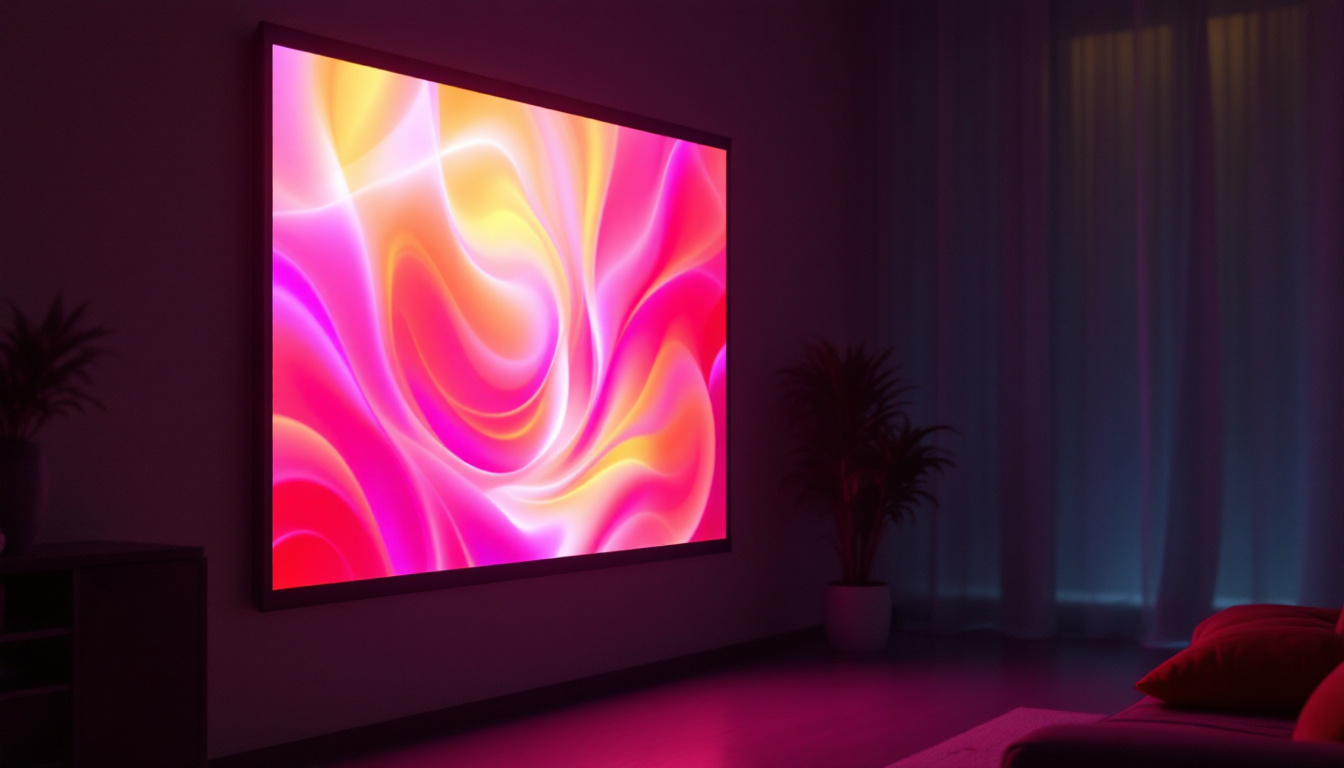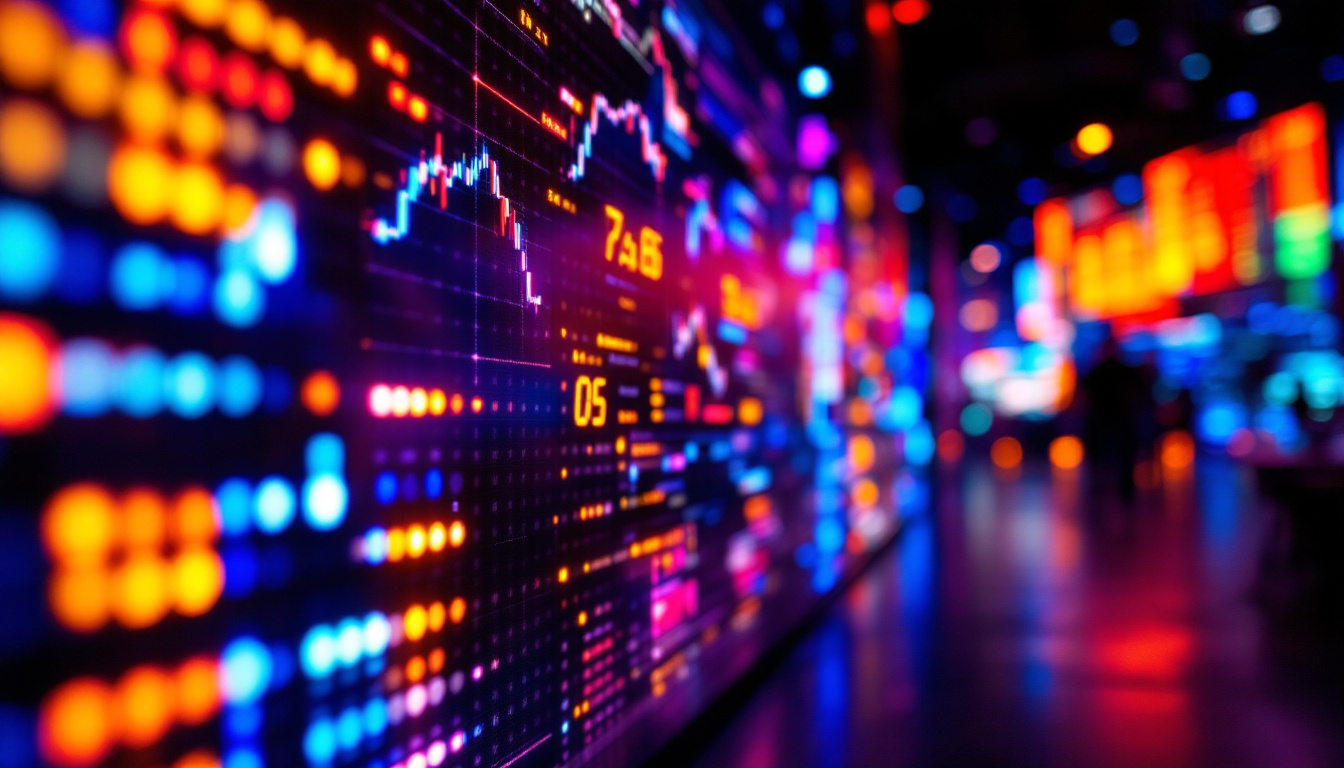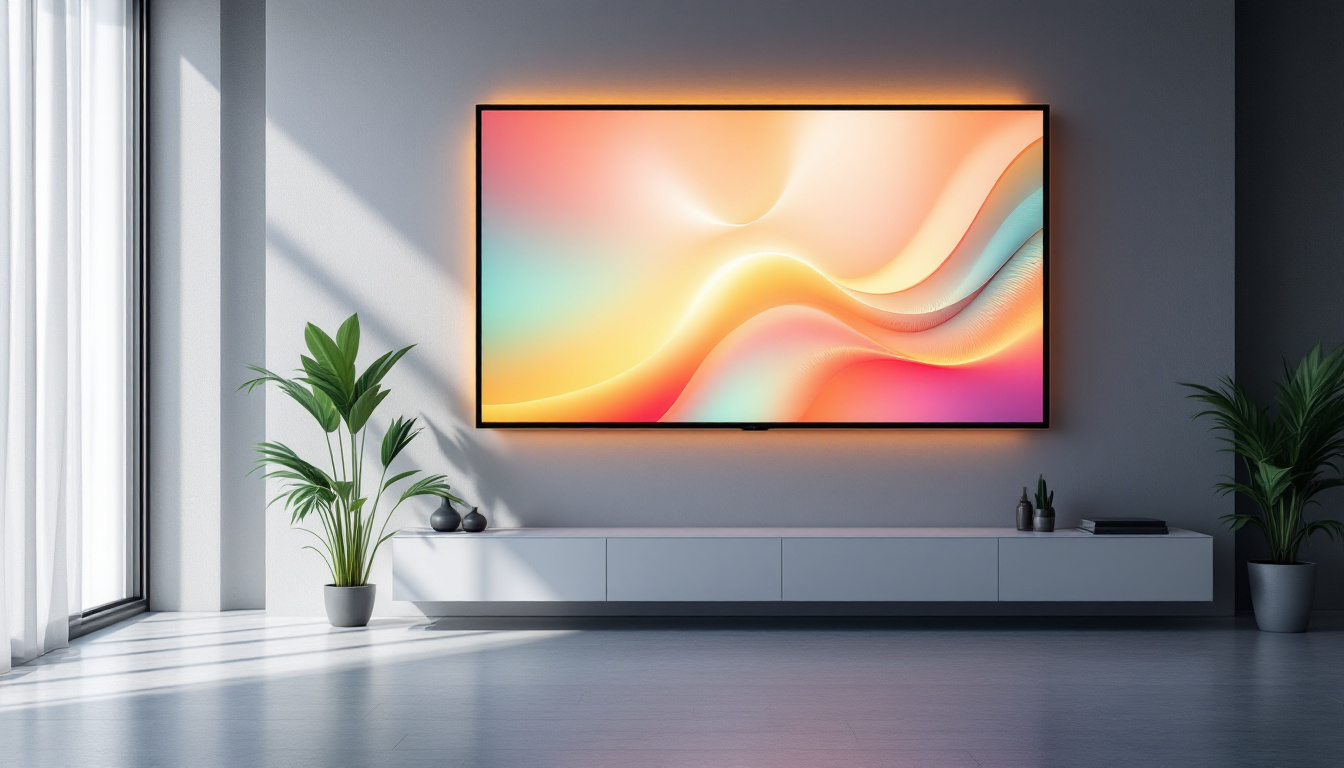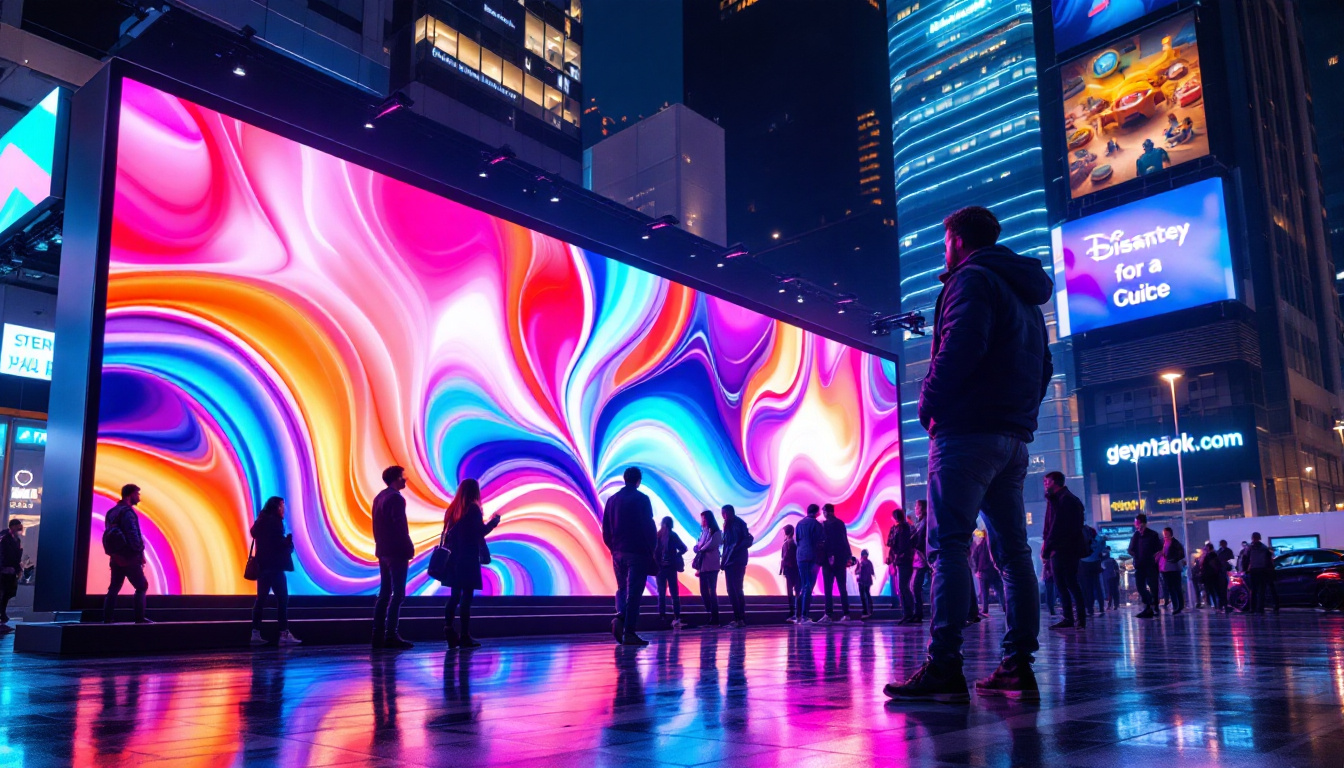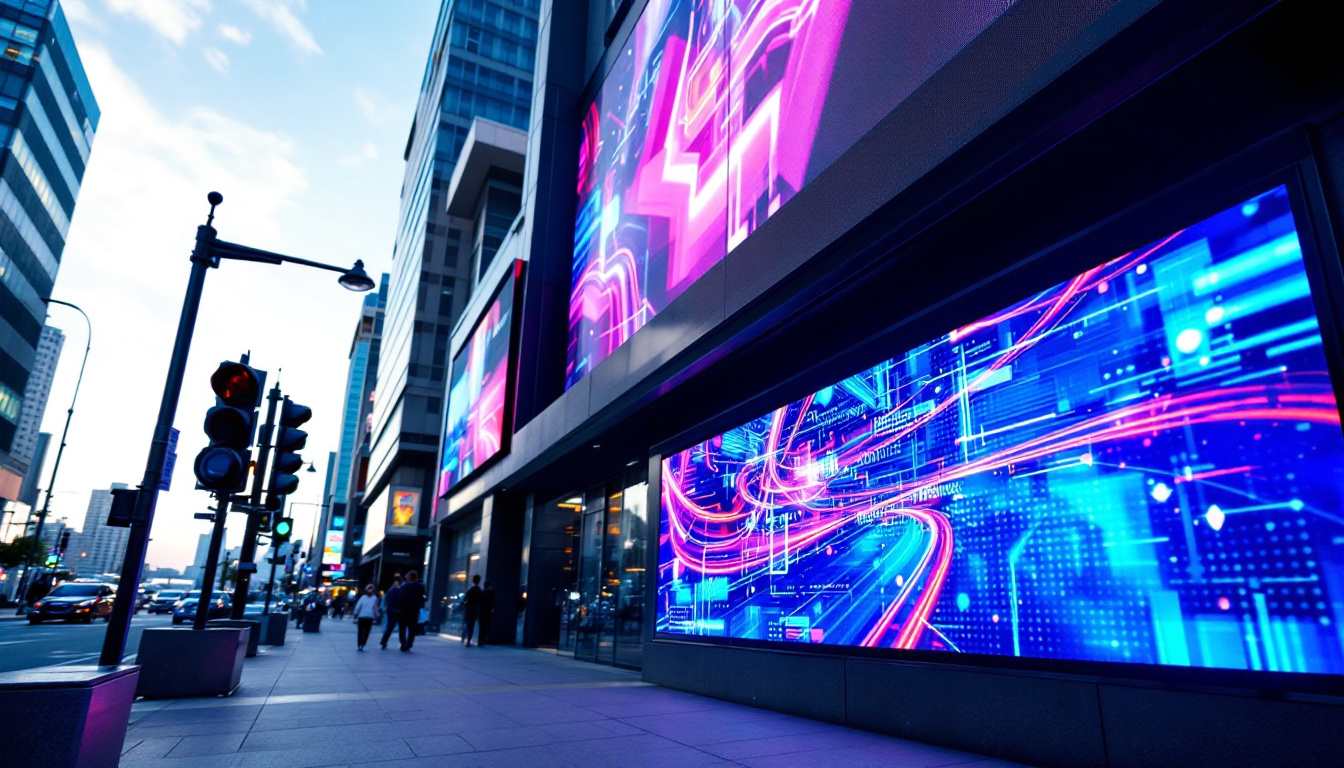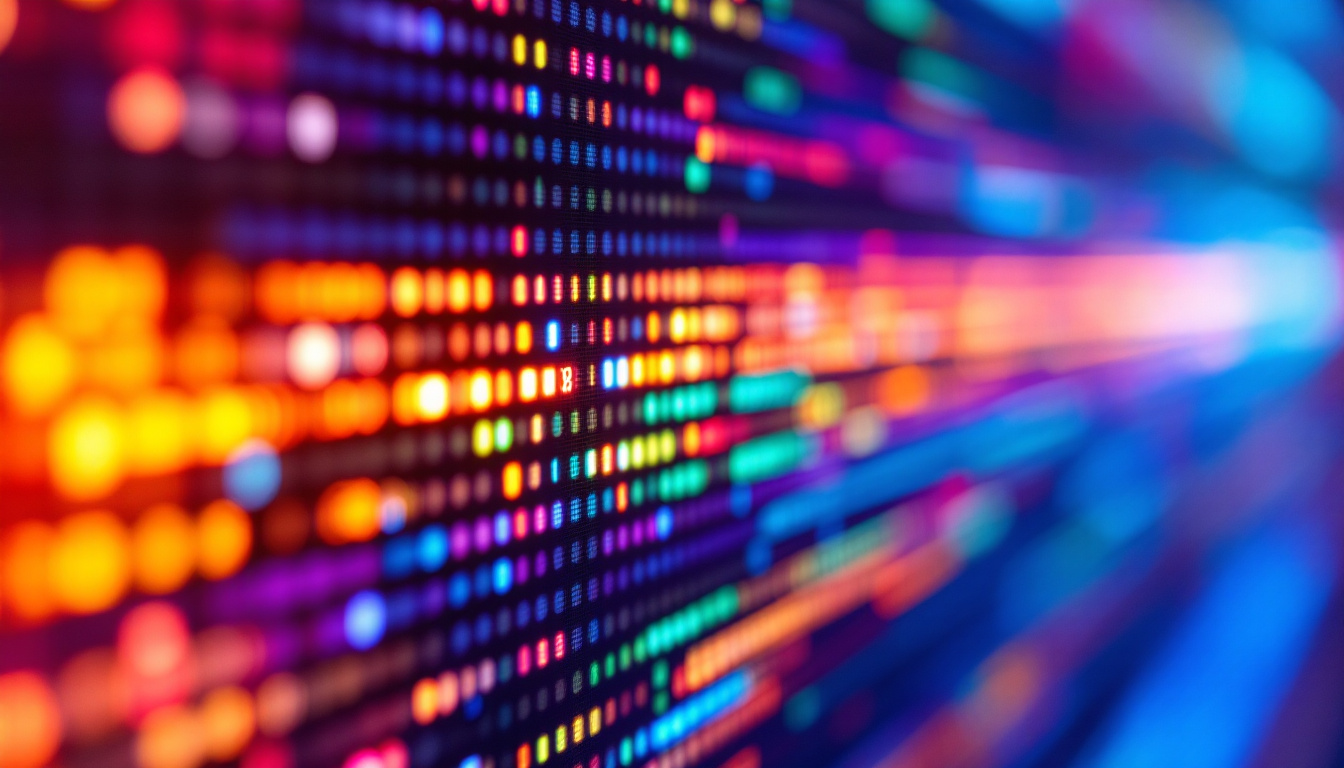In the modern world, large video screens have become an integral part of various environments, from bustling city squares to corporate boardrooms. One of the most popular technologies behind these displays is LED (Light Emitting Diode) technology. This article delves into the intricacies of LED displays, their advantages, applications, and future trends, providing a comprehensive understanding of why they are the go-to choice for large video screens.
Understanding LED Technology
What is LED?
LED, or Light Emitting Diode, is a semiconductor device that emits light when an electric current passes through it. Unlike traditional incandescent bulbs, which generate light by heating a filament, LEDs produce light more efficiently and with less heat. This fundamental difference is what makes LED technology so appealing for display applications. The energy efficiency of LEDs not only reduces electricity costs but also contributes to a lower carbon footprint, making them a more environmentally friendly option compared to their incandescent counterparts.
LEDs are made from materials such as gallium arsenide or gallium phosphide, which emit light when electrons recombine with holes in the semiconductor. The color of the light emitted depends on the materials used in the diode. This versatility allows for a wide range of colors and brightness levels, making LEDs suitable for various display applications. Additionally, advancements in LED technology have led to the development of tunable white LEDs, which can adjust their color temperature, offering users the ability to create the perfect ambiance for any setting, from warm and cozy to bright and energizing.
Types of LED Displays
There are several types of LED displays, each designed for specific applications. The most common types include:
- Direct View LED (DVLED): These displays consist of individual LED modules that are assembled together to form a larger screen. They are often used in outdoor advertising and large venues due to their high brightness and visibility. Their modular design allows for easy repairs and upgrades, making them a popular choice for dynamic advertising environments.
- LED Backlit LCD: These displays use LEDs to illuminate an LCD panel from behind. While they are not true LED displays, they offer improved brightness and color accuracy compared to traditional LCDs. This technology has become the standard for many televisions and computer monitors, providing consumers with a better viewing experience.
- Organic LED (OLED): OLED displays use organic compounds that emit light when an electric current is applied. They are known for their exceptional color accuracy and contrast ratios, making them popular for high-end television and mobile devices. Furthermore, OLED technology allows for thinner and more flexible screens, paving the way for innovative designs in consumer electronics.
How LED Displays Work
LED displays work by combining multiple LED pixels to create images and videos. Each pixel consists of red, green, and blue (RGB) diodes, which can be adjusted in brightness to produce a wide spectrum of colors. By varying the intensity of each color, LED displays can create millions of different hues, allowing for vibrant and dynamic visuals. The ability to achieve deep blacks and bright whites simultaneously is one of the key advantages of LED technology, especially in high-contrast scenes.
The control of these pixels is managed by sophisticated software that processes video signals and translates them into the corresponding brightness levels for each LED. This real-time processing ensures that the display can adapt to changing content, providing a seamless viewing experience. Additionally, many modern LED displays incorporate features such as HDR (High Dynamic Range) support, which enhances the overall picture quality by expanding the range of colors and brightness levels, resulting in more lifelike images. As technology continues to evolve, the integration of artificial intelligence in display systems is also on the rise, allowing for smarter content management and improved user interaction.
Advantages of LED Displays
Energy Efficiency
One of the most significant advantages of LED displays is their energy efficiency. Compared to traditional display technologies, such as CRT or LCD, LEDs consume significantly less power. This efficiency not only reduces operational costs but also minimizes environmental impact, making LEDs a more sustainable choice for large video screens.
Additionally, LED displays generate less heat, which contributes to lower cooling requirements in venues, further enhancing their energy-saving capabilities. This combination of low power consumption and reduced heat output makes LED displays an attractive option for both indoor and outdoor applications.
Brightness and Visibility
LED displays are renowned for their high brightness levels, making them ideal for outdoor environments where sunlight can wash out other display types. The ability to achieve brightness levels exceeding 10,000 nits ensures that images remain clear and vibrant, even in direct sunlight.
Furthermore, LED technology offers excellent visibility from wide viewing angles. This characteristic is critical for large video screens in public spaces, where viewers may be positioned at various distances and angles. The consistent brightness and color accuracy across different viewing positions enhance the overall viewing experience.
Longevity and Durability
LED displays are designed to last. With a typical lifespan of 50,000 hours or more, they outlast many other display technologies. This longevity translates to lower maintenance costs and reduced frequency of replacements, making them a wise investment for businesses and organizations.
Moreover, LED displays are built to withstand harsh environmental conditions. They are often weatherproof and resistant to shock, making them suitable for outdoor installations. This durability ensures that they can perform reliably in various settings, from sports arenas to concert venues.
Applications of LED Displays
Advertising and Marketing
One of the most prominent applications of LED displays is in advertising and marketing. Large video screens can be found in high-traffic areas, such as city centers, shopping malls, and stadiums, where they capture the attention of passersby. Their vibrant colors and dynamic content make them an effective medium for promotional campaigns.
Digital billboards, often powered by LED technology, allow advertisers to change content quickly and easily, enabling real-time marketing strategies. This flexibility is particularly advantageous for businesses looking to promote time-sensitive offers or events.
Entertainment and Events
In the entertainment industry, LED displays play a crucial role in enhancing the viewer experience. Concerts, festivals, and sporting events utilize large LED screens to broadcast live feeds, provide information, and create immersive visual experiences. The ability to display high-resolution graphics and videos ensures that audiences remain engaged, regardless of their seating position.
Moreover, LED technology is increasingly being used in stage design and production, where creative lighting and visuals can transform performances into unforgettable experiences. The versatility of LED displays allows for innovative stage setups that can adapt to various themes and performances.
Corporate and Educational Settings
In corporate environments, LED displays are commonly used for presentations, video conferencing, and information sharing. Their clarity and brightness make them suitable for large conference rooms, ensuring that all participants can see the content clearly, regardless of their position in the room.
educational institutions also benefit from LED technology, using large video screens for lectures, events, and interactive learning experiences. The engaging visuals provided by LED displays can enhance the learning process, making complex subjects more accessible and interesting for students.
Future Trends in LED Display Technology
Advancements in Resolution
The demand for higher resolution displays continues to grow, and LED technology is evolving to meet this need. Innovations such as MicroLED and MiniLED are paving the way for displays with even finer pixel densities, resulting in sharper images and more detailed visuals.
MicroLED technology, in particular, offers the potential for self-emissive displays that can achieve incredible brightness and contrast ratios. This advancement could revolutionize the way large video screens are used, especially in high-end applications such as cinema and art installations.
Integration with Smart Technology
As the world becomes increasingly connected, the integration of LED displays with smart technology is on the rise. Smart LED displays can be connected to the Internet of Things (IoT), allowing for real-time data integration, remote management, and interactive capabilities.
This connectivity enables businesses to tailor content based on audience demographics, weather conditions, and other real-time data, creating more personalized and relevant experiences for viewers. The potential for interactivity also opens up new avenues for engagement, such as touch-sensitive displays and augmented reality applications.
Sustainability Initiatives
With growing awareness of environmental issues, the LED display industry is focusing on sustainability initiatives. Manufacturers are exploring eco-friendly materials and production processes to reduce the environmental impact of LED displays.
Additionally, the energy efficiency of LED technology aligns well with sustainability goals, making it a preferred choice for organizations looking to minimize their carbon footprint. As the demand for environmentally responsible solutions increases, LED displays are likely to play a pivotal role in promoting sustainable practices across various industries.
Conclusion
Large video screens powered by LED technology have transformed the way information is communicated and experiences are shared. Their energy efficiency, brightness, durability, and versatility make them the ideal choice for a wide range of applications, from advertising to entertainment and beyond.
As technology continues to advance, the future of LED displays looks promising. With innovations in resolution, smart technology integration, and sustainability initiatives, LED displays are poised to remain at the forefront of visual communication for years to come. Understanding the capabilities and benefits of LED displays is essential for anyone looking to leverage this powerful technology in their business or organization.
Discover LumenMatrix’s Innovative LED Solutions
Ready to elevate your visual communication and create unforgettable experiences with LED technology? Explore LumenMatrix’s comprehensive range of LED display solutions, designed to captivate your audience and amplify your message. From vibrant Indoor and Outdoor LED Wall Displays to dynamic Vehicle and Sports LED Displays, each product is crafted to deliver maximum impact. Discover the future of digital signage with our cutting-edge Custom, All-in-One, and Transparent LED Displays. Check out LumenMatrix LED Display Solutions today and transform your space into a visual spectacle.

